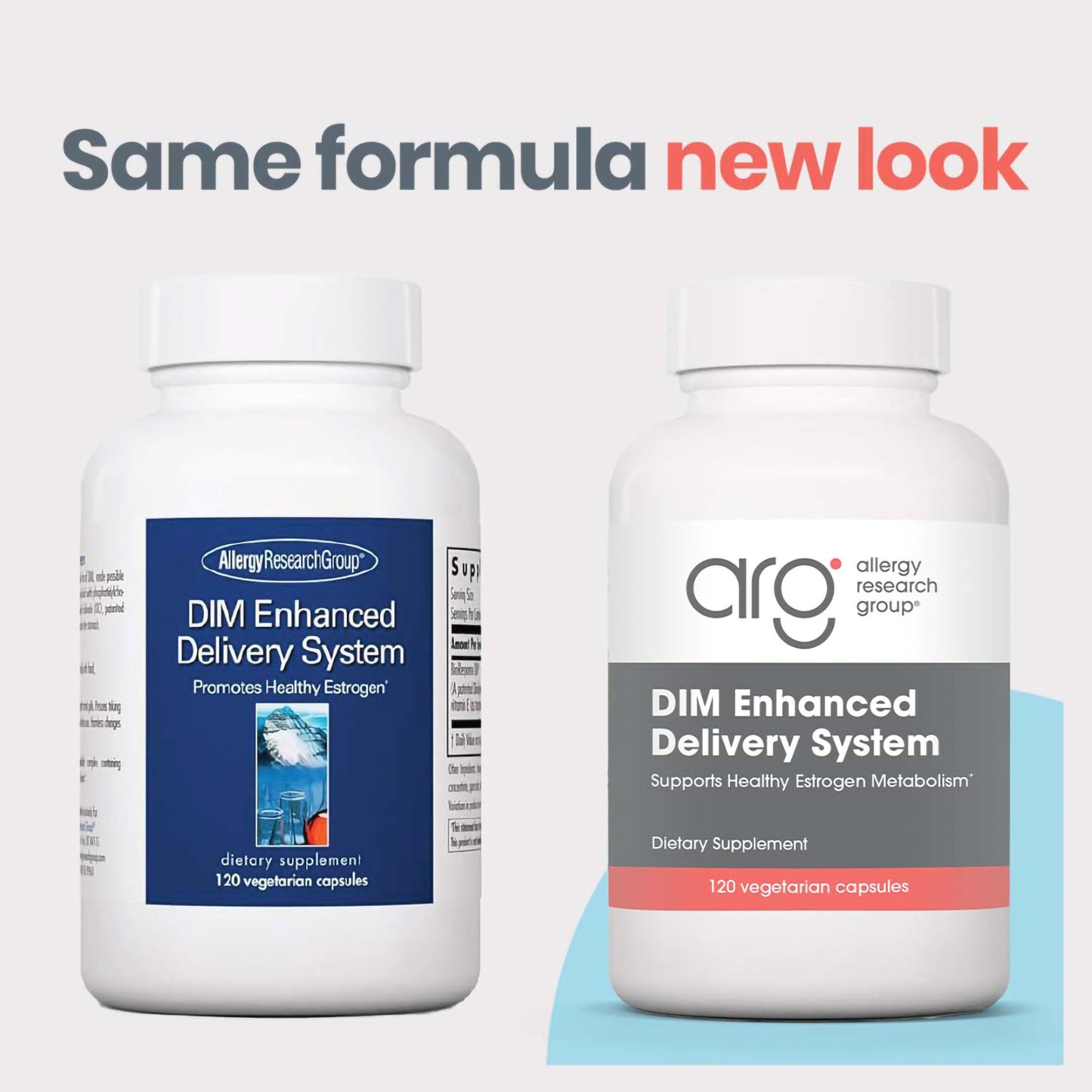











SKU:74140
DIM Enhanced Delivery System
DIM Enhanced Delivery System
Supports Healthy Estrogen Metabolism*
Product Description
Couldn't load pickup availability






-
Ingredients -
Product Information -
Suggested Use
Ingredients:
Serving Size: 4 capsules
Servings Per Container: 30
Amount per serving:
BioResponse DIM® (A proprietary diindolylmethane complex - starch, DIM (25% min.), vitamin E (as tocophersolan), phosphatidylcholine (sunflower), silica): 300 mg
Other Ingredients:
Hydroxypropyl methylcellulose, microcrystalline cellulose, rice hull concentrate, gum arabic, sunflower oil.
Variation in product color may occur. Keep in a cool, dry place, tightly capped.
Advanced support for estrogen metabolism, hormone balance, and breast and cervical health with clinically studied BioResponse® DIM.*
What It Does
DIM Enhanced Hormone Detox promotes healthy estrogen metabolism and hormonal balance by supporting the production of beneficial 2-hydroxy estrogen metabolites.* This bioavailable formula may help maintain breast and cervical health, buffer testosterone-to-estrogen conversion, and optimize estrogen receptor signaling.*
How It Works
• Diindolylmethane (DIM): A metabolite of indole-3-carbinol from cruciferous vegetables that supports phase 1 estrogen detoxification by activating cytochrome P450 enzymes and enhancing the formation of 2-hydroxy estrogens.* [1-2]
• BioResponse® DIM Complex: A patented, microencapsulated form of DIM with enhanced bioavailability compared to crystalline DIM, promoting consistent absorption and clinical effectiveness.* [5-6]
• Histone Acetylase Inhibition: DIM also modulates estrogen receptor binding, providing additional support for hormone-sensitive tissue health.* [3,7]
• Testosterone-Estrogen Balance: DIM helps buffer excessive aromatization of testosterone into estrogen, supporting a healthy androgen-estrogen balance.* [8]
Who It’s For
Ideal for individuals seeking to optimize estrogen metabolism, support breast and cervical health, and promote hormonal balance, especially during times of hormonal transition or stress.*
Special Features
• Stable and Ready-to-Use: Unlike indole-3-carbinol (I3C), BioResponse® DIM is highly stable and does not require stomach conversion for activity.* [9]
• Clinically Studied and Bioavailable: DIM Enhanced Hormone Detox provides a form of DIM that has been extensively studied for its effectiveness in promoting beneficial estrogen metabolites and supporting overall hormone health.* [10]
DIM Enhanced Hormone Detox provides a clinically validated approach to promoting healthy estrogen metabolism, hormonal balance, and tissue-specific health through a highly bioavailable, stable DIM formulation.*
References
¹ Thomson CA, et al. Nutr Rev. 2016;74(7):432-43.
² Pondugula SR, et al. Toxicol Lett. 2015;232(3):580-9.
³ Tsuchiya Y, et al. Cancer Lett. 2005;227(2):115-24.
⁴ Thomson CA, et al. Nutr Rev. 2016;74(7):432-43.
⁵ Thomson CA, et al. Breast Cancer Res Treat. 2017;165(1):97-107.
⁶ Sepkovic DW, et al. Cancer Epidemiol Biomarkers Prev. 2009;18(11):2957-64.
⁷ Li Y, et al. Cancer Res. 2010;70(2):646-54.
⁸ Hwang C, et al. Am J Transl Res. 2016;8(1):166-76.
⁹ Anderton MJ, et al. Drug Metab Dispos. 2004;32(6):632-38.
¹⁰ Dalessandri KM, et al. Nutr Cancer. 2004;50(2):161-7.
Suggested use:
As a dietary supplement, 2 to 4 capsules one or two times daily with food, or as directed by a healthcare practitioner.
Warning:
Do not use this product if you are pregnant or lactating, or using birth control pills. Persons taking prescription medications should consult a healthcare professional before use. Harmless changes in urine color may occur. Increased water consumption reverses this side effect. Keep out of reach of children.
Stay Connected
Sign up and we’ll keep you up to date on the latest news, clinical education resources, product innovations and promotions.
